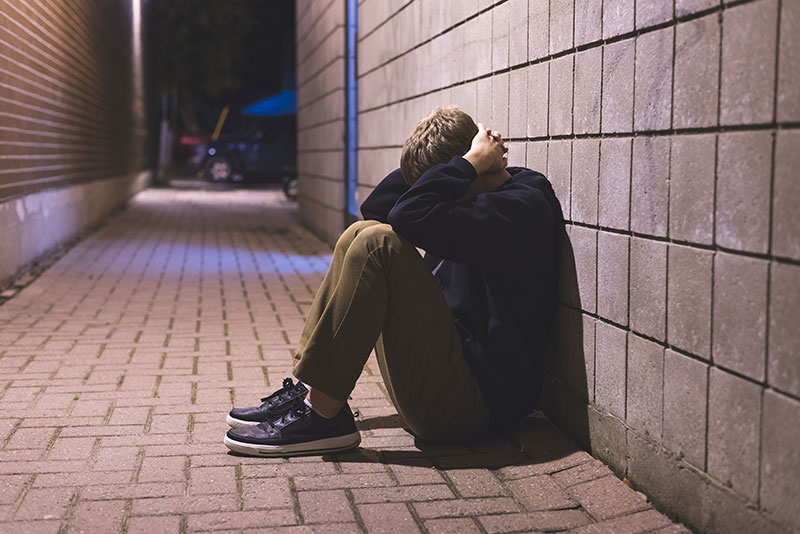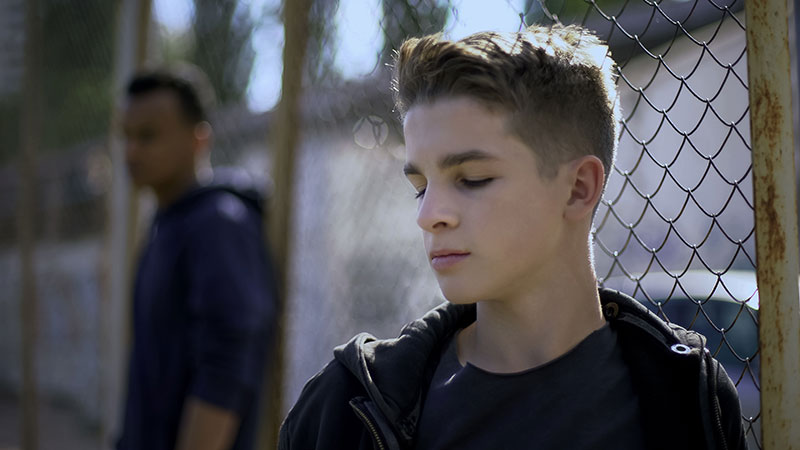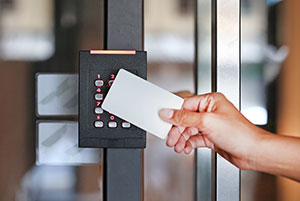While youth crime is a persistent problem across Australia, nowhere is it worse than Queensland. So much so, in fact, that many consider the current juvenile crime problem a crisis – with some even going as far as labelling it an epidemic.
Unfortunately, youth crime statistics for Queensland make it increasingly harder to argue with this assessment. Motor vehicle theft, in Mount Isa, for instance, which includes carjacking, has more than doubled since 2020, with break-ins in Cairns seeing the same alarming growth. Meanwhile, the number of assaults in Townsville increased by 100% during the same period. [1]
Consequently, data has revealed that an average of 287 juvenile offenders are in youth detention centres every day. Worse, this figure is a staggering 50% ahead of NSW in 2nd place, where 190 young people are behind bars, on average, every day. [2]
It’s clear something drastic must be done – and fast.
But with the police increasingly stretched to their limits and effective solutions from the Queensland Government taking time, it’s crucial to take your safety and security, and, more importantly, that of your family, into your own hands.
With all this in mind, let’s explore the most effective security measures for protecting your home from the growing problem of youth crime.
Understanding Youth Crime
Before looking at methods of youth crime prevention and ways of combating it, we need to address the crucial question – why is youth crime such a huge problem? Let’s look at the contributors to youth crime and its harmful effects on communities.
Common Types of Youth Crime
Here are some of the most common kinds of criminal activity engaged in by juvenile offenders.
- Theft: this includes burglary, home invasions, and other types of robbery
- Auto theft: though this could be categorised under theft, motor vehicle theft is becoming so prolific that many refer to Queensland as the “car crime capital” of Australia. This includes carjacking, in which the owner is in the vehicle at the time of the theft, with a recent famous case being that of soccer star Elissia Carnavas – who was on the phone to a radio station at the time! Worse, auto theft often results in joyriding, as in the tragic case of a couple killed in a collision with a 17-year old driving a stolen vehicle.
- Assault: 22% of youth crime offenses last year were categorised as “intending to cause harm. In addition to assault, this includes sexual assault, gang-related violence – and even murder.
- Arson: this can range from setting fire to buildings and vehicles, to mailboxes and rubbish and wheelie bins.
- Vandalism: this includes all types of criminal damage, like smashing windows and graffiti.
- Drug offences: this not only further contributes to damaging the community and encourages gang violence.

Factors Contributing To Youth Crime
To determine why youth crime is such an alarming issue, it’s essential to examine its root causes. Some of the biggest contributors to youth crime include:
- Unstable home lives: sadly, many young criminals were themselves the victims of crime in the form of family and domestic violence.
- Substance abuse: being exposed to alcohol and/or drugs at a formative age can be devastating for a young mind, making engaging in criminal activity a more appealing option – or the only one left to them.
- Lack of education: many juvenile offenders come from families that don’t place a high value on education, depriving them of options other than crime.
- Mental immaturity: the majority of young criminals don’t possess the maturity to fully understand the consequences of their actions – on their victims or their own future. Unstable home environments, substance abuse, and unemployment only worsen this.
- Lack of a cohesive community: if a young person grows up in a community where people don’t know or look out for each other, there’s far less accountability. For instance, if the adults don’t know the kids causing trouble, they won’t be able to inform their parents. And even if they did, if the adults within the community aren’t so familiar with each other, they’ll be less inclined to listen to someone reporting their child’s poor behaviour.
- Poor economic prospects: if young people live in an area with few job opportunities, there’s a far greater chance of them turning to crime
The Effects of Youth Crime on Communities
Your content goes here. Edit or remove this text inline or in the module Content settings. You can also style every aspect of this content in the module Design settings and even apply custom CSS to this text in the module Advanced settings.
Now we’ve examined the key causes of youth crime, let’s turn to the harmful effects it has on communities:
Damage inflicted on victims
The first to suffer the consequences of juvenile offenders’ actions are the victims of those crimes. In some cases, such as assault, home invasions, and carjacking, the victims suffer physical damage – some of which leave long-lasting, or even permanent, reminders of what they went through. At worst, the harm they come to proves fatal.
The psychological scarring of being a victim of youth crime can often be far worse. In home invasion cases, for instance, 19% of victims are forced to move home. In the worst cases, the victims, and their outlook on the world, are never the same again.
And then – there’s the harrowing effect that witnessing the effects of youth crime can have on children. Depending on their proximity to a crime and its severity, children can carry the effects into adulthood or develop a mindset that the world is a crueller and more hostile place than it really is.
It divides communities instead of uniting them
Instead of strengthening them, youth crime weakens community ties. It creates fear and resentment towards young people, and conversely, members of the community are less patient with and tolerant of them. This can result in the communities youth feeling victimised even when, in some cases, they haven’t done anything wrong. At worse, this can make them act out even more – or feel their destructive actions are justified.
If anger within a community continues to build, eventually, it can spill over and lead to vigilantism, where people decide to carry out their own form of justice. This is especially likely if the community doesn’t feel the police have done enough to deal with juvenile offenders. Unfortunately, this will only result in more violence, victims, and people behind bars – perpetuating the vicious cycle.
The community is a less pleasant place to live
When youth crime is rampant, people, particularly the elderly, are more wary, or even afraid, of going out at night. Worse, some people feel vulnerable in their homes, becoming anxious when someone knocks on their door or even passes by their house.
If youth crime isn’t dealt with, eventually, the community will develop a reputation for being “rough”. This encourages people to leave while discouraging others from moving there – pushing down property values and increasing insurance costs. Similarly, with higher premium costs, or being unable to get insurance at all, and after being targeted by youth offenders, local businesses will relocate – or close their doors altogether.
Stretching the capacity of emergency services
As alluded to earlier, the youth crime crisis is taking a significant toll on the police, who simply can’t keep up with the amount of criminal activity. This is worsened by the fact that increasing numbers of the police force are retiring – or leaving altogether from burnout and frustration. Fortunately, in a rapid attempt to rectify this, the Queensland government has allotted $90m to boosting recruitment –even willing to pay suitable individuals to relocate.
Unfortunately, the police are only part of the story, as other emergency services, namely ambulances and the fire service, are also being spread increasingly thin. If they’re occupied with the effects of juvenile criminal activity, they can’t be elsewhere where someone could be in desperate need of their even more.
Personal Safety Tips
As emphasised at the start of this article, despite their efforts, there’s only so much the police and government can do about the growing youth crime problem. Until the authorities devise effective ways to deal with the youth crime issue decisively, you must seize control of keeping you and your family safe.
Let’s look at some of the most effective ways to better secure your home and shield yourself from the dangers of youth crime in your neighbourhood.
Be Aware Of Your Surroundings
Firstly, always remain aware of your environment, particularly who’s around you and what they’re doing. When in public places, take note of any groups of teenagers and if there is a route you can take that minimises contact and, subsequently, the chance of confrontation. It’s also prudent to observe who else is around – and whose attention you could attract if your safety is compromised.
Travel In Groups
Groups of young criminals tend to hide behind safety in their numbers, typically targeting people on their own – and those that are markedly more vulnerable than them. To combat this, use their own tactics against them in defence, and travel with other people wherever possible.
Communicate With Trusted People
If you must travel alone, inform someone of your current whereabouts and travel plans. This could include dropping whoever you’re meeting a quick message or call to let them know you’re en route and how long you’ll be. Similarly, when you leave them, do the same to let them know you got home safely. That way, if there’s any deviation from that plan, they can call to check on you – or perhaps even come out to look for you – to ensure you’re not in danger.
Self-Defence Techniques
Now, although the best course of action is always avoiding confrontation, learning a few self-defence skills is still a great way to better protect yourself. At the very least, it will give you confidence that might deter groups of young criminals from approaching you, as you don’t appear vulnerable.
In addition to self-defence techniques, you could purchase a few security components that will assist your personal protection. First, there’s pepper spray, which you can direct into an assailant’s eyes to obscure their vision and cause discomfort – while you make a swift escape. Similarly, triggering a personal duress, or panic, alarm you carry with you will disorient the criminal and draw attention to you both.

Protecting Your Home
Now that we’ve covered a few ways to ensure your personal safety, let’s look at a few of the most effective home security solutions.
Secure Doors and Windows
The first, and often simplest, way to protect your property from youth crime is to properly secure entry points. With that in mind, here are a few of the best ways to secure your home’s doors and windows:
Doors
- Start by testing the integrity of the structure of your front and back doors, i.e., how secure the frame, hinges, and locks are, and replace them if necessary.
- Even if your locks are in good condition, upgrading them to deadbolts with accompanying strike plates is advisable.
- Doorstop alarms are also effective in this regard as they can be placed underneath each door in your home, which prevents them from being opened and will trigger a piercing siren.
Windows
- Test the security of your window locks and upgrade them where required.
- Windows can be fitted with glass break alarms that sound if someone attempts to smash one to force entry.
Additionally, both doors and windows can be fitted with security screens, as manufactured by Crimsafe or a similar brand. Security screens serve multiple purposes as they deter criminals from attempting to break into your home and make it considerably more difficult for them to do so were they to try. Plus, installing a Crimsafe screen on your front door creates an extra barrier if you’re wary about who you might answer the door to.
Install Security Systems
Installing security systems, such as alarms and cameras, is a highly effective way to reduce your chances of suffering a home invasion, vandalism, or other types of crime perpetrated by young people.
The first reason security systems are a worthwhile investment is that they’re a strong deterrent to criminal activity. The sight of a security camera or alarm box will often be enough to deter young perpetrators from attempting to break into your home.
Better still, a growing range of active deterrent cameras takes this aspect a few steps further by triggering an alarm, a recorded message, and flashing lights if someone comes too close. These are especially effective against vandalism and even loitering around your property, as the camera’s lights and sounds will attract attention to what they’re doing.
Secondly, security systems provide real-time alerts, giving you a far greater awareness of what’s happening in and around your home at all times.
Alarm systems are comprised of a series of motion sensors that, if triggered, set off the sirens and send an alert to your phone. However, if you sign up for a back-to-base monitoring service, the alerts are also sent to a professional security firm, who’ll send a security guard out to investigate.
Security systems that include cameras add another layer, as they can send you photos or videos via a mobile app whenever one of the attached sensors is triggered. Alternatively, some security cameras can provide a continuous footage stream for more comprehensive self-monitoring, allowing you to see what’s going on at your property at any given time.
Some security cameras allow you to control them remotely, allowing you to change their vantage point. Some cameras also have two-way talk functionality – an excellent way to communicate with potential young offenders lingering around your home.
Perhaps the most comprehensive solution enabled by cameras is 24/7 monitoring CCTV, with which a security company always surveils your property from their control centre. With 24/7 monitoring, you not only have someone watching over your property, but it’ll be a security professional who’s trained to spot suspicious activity and will act without hesitation when required. This includes sending out a security patrol to investigate the scene and, when necessary, calling the police. Best of all, they’ll act on your behalf if there is a security incident, including directly addressing suspicious-looking youths – or those amid criminal activity.
Additionally, a doorbell camera may be an invaluable addition to your home security setup, as it allows observe events outside your door in real time. Like a Crimsafe security screen, doorbell cameras allow you to see who’s at the door without potentially putting yourself at risk.
Lastly, security systems that feature cameras will record evidence of any criminal activity, which will help the authorities catch those responsible and your insurance claims. Also, while on the subject of insurance, installing a security system could save you money on your premiums, because homes with security solutions are less likely to be targeted for burglaries.
Exterior Lighting
Installing extra lighting around the exterior of your home is a simple, yet surprisingly effective, way to better secure your home. Much like cameras or alarms, a well-lit exterior will deter potential intruders as it immediately tells them you’re security conscious – and attempting to break into your home won’t be a cakewalk. Adequate lighting also leaves fewer opportunities for criminals to sneak up to your property undetected – or even loiter outside it too long. Motion-activated spotlights, in particular, should be part of your external lighting setup, as they offer the extra perk of startling the person when they come on – making you instantly aware someone is outside.
You can complement your extra exterior lighting with a bit of landscaping your front and/or back yards to remove hedges, bushes, leafy trees, etc., that criminals could use to hide. It’s also wise to cut branches on trees that an especially opportunistic – and agile – criminal could climb to access upper-floor windows.

Building a Safer Neighbourhood
Now that we’ve looked at how you can boost your security measures to address your personal and immediate safety needs, let’s change tack and look at how to build a safer neighbourhood long-term.
Neighbourhood Watch Programs
The first step in creating a safer neighbourhood is to increase your collective awareness of what’s happening within your community. Starting a neighbourhood watch is an excellent way to achieve this, as it requires collaboration between members of the community and allows everyone to pool their best ideas, skills, and resources. Also, perhaps best of, just establishing a neighbourhood watch, and putting up posters, flyers, etc., can be enough to deter criminal activity and help to reduce juvenile offences.
Look Out for Your Neighbours
On a related note, the key to a strong neighbourhood watch is actually watching over your neighbours’ homes. If you see anyone engaging in criminal activity, call the police. Similarly, if you see anyone suspiciously around their home, let your neighbours know – and take note of the person’s appearance.
Additionally, help keep a neighbour’s home safe when they’re on vacation by making their plook like their property is occupied. This includes removing mail from their mailbox and/or porch and keeping their yard(s) tidy. Naturally, they’ll do the same for you when you go on holiday; this type of cooperation is an excellent way to tighten bonds within your community.
Organise Community Events
On the subject of bonding, getting everyone together for community events is a powerful way to spread positivity and help young people see the value in protecting the neighbourhood. This could be as simple as a neighbourhood picnic, BBQ, sports day, etc. The better everyone knows each other, the more likely they are to look out for each other, creating a sense of collective ownership and that the community is worth protecting.
Engage with Local Law Enforcement
Collaborating with local police will strengthen your neighbourhood watch and help to create a more cohesive and safe community long-term. The police department in your area will welcome proactive efforts to protect yourself against youth crime, as it helps them do their job more effectively.
The police are also an unparalleled crime-prevention resource and source of information. They’ll be able to keep you updated on the state of youth crime in the neighbourhood and what they’re doing about it, advice on the best security solutions and personal protection – and perhaps even conduct self-defence classes.
Address Environmental Factors
There’s a concept called Broken Windows Theory, which states that an environment that appears rundown, unmaintained, or damaged by criminal activity, e.g., graffiti and broken windows, will encourage more crime.
Subsequently, making parts of your neighbourhood more presentable, whether clearing trash and debris, a little landscaping, fixing up the local park or playground, or, naturally, fixing broken windows, will make it less of a magnet for youth crime. Better still, as with some of the above measures, it could result in younger members of the community taking more pride in and having more gratitude for their neighbourhood, deterring them from anti-social behaviour.
Support Youth Programs
Finally, it’s crucial to support projects and initiatives for the youth in your community. The more things there are to keep young people to do, the less likely they’ll be to engage in criminal behaviour.
They are several reasons for this, with the first simply being that if they have a hobby that keeps them occupied, committing mindless acts of crime will be less appealing. Secondly, getting in trouble could result in their favourite recreational activities being taken away, offering more incentive to stay on the right track.
Additionally, whether playgrounds, footy fields, recreational centres, and sports clubs, such venues and resources help make young people feel supported and empowered – that their community cares about them. In stark contrast, their absence makes young people feel ignored and insignificant. When combined with the boredom and restlessness of having little to do, this creates an environment where youth crime is almost inevitable.
Summary
To recap:
- Common kinds of youth crime
- Theft
- Auto theft
- Assault
- Arson
- Vandalism
- Drug offences
- Factors that contribute to youth crime
- Unstable home lives
- Substance abuse.
- Lack of education
- Mental immaturity
- Lack of a cohesive community
- Poor economic prospects
- The effects of youth crime on communities
- Damage inflicted on victims
- It divides communities instead of uniting them
- The community is a less pleasant place to live
- Stretching the capacity of emergency services
- Personal safety tips
- Be aware of your surrounding
- travel in groups
- communicate with trusted people
- self-defence techniques
- Protecting your home
- Secure the main entrances, i.e., doors and windows
- Install security systems, such as alarms and security cameras
- Add exterior lighting, including motion-activated floodlights
- Ways to build a safer neighbourhood
- Neighbourhood watch programs
- Look out for your neighbours
- Organise community events
- Engage with local law enforcement
- Address environmental factors
- Support youth programs
If you’re concerned about youth crime in your neighbourhood and want to discuss the most effective ways to boost your home security and personal safety, please get in touch. We’ll provide a comprehensive, hassle-free, security assessment to determine the most effective security solutions for protecting you and your loved ones.





